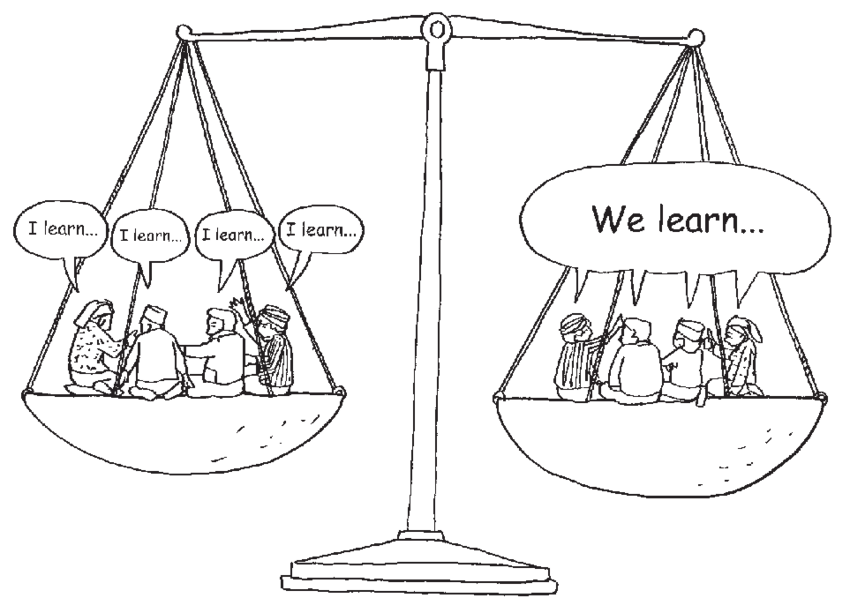Multi-Team Synergy: The Importance of Collaboration In Agile Teams
By Team Lean Agile Intelligence

The Importance of Collaboration In Agile Teams
The success of an organization hinges greatly on its ability to cultivate a culture of shared ownership and collaboration among its members, commonly referred to as Multi-Team Synergy. By promoting collaboration within agile teams, productivity and effectiveness of team members can be significantly enhanced.
In this post, we will delve into the best practices of fostering Multi-Team Synergy. By adopting foundational techniques at different stages of your learning journey, you can acquire invaluable strategies to implement within your team. It's important to note that while Multi-Team Synergy is crucial, it's just one piece of the larger puzzle. For a comprehensive overview of your team's current process status, don't miss out on our free agile assessment for Multi-Team Agility.
Multi-Team Synergy and The Learning Journey
At Lean Agile Intelligence, we recognize Multi-Team Synergy as the sense of shared ownership and collaboration among Multi-Team Effort contributors. We divided the learning journey into 4 different stages: Developing, Emerging, Adapting, and Optimizing. In the following sections, we will discuss each stage in detail as well as provide practical tips and techniques to help you extend your skills in this area.

Source - 5 Team Synergy Secrets Every People Leader Should Know
Developing
A Multi-Team Effort "developing" an understanding of the value of Synergy and adopting the foundational techniques should focus on the following improvements:
-
The What: Contributors to the Multi-Team Effort have a shared understanding of the goals of the products/initiatives they are working on
-
The How: The key to ensuring a shared understanding of the goals of the products/initiatives in a multi-team effort is open communication, collaboration, and alignment among team members. Regular alignment sessions, cross-team communication, and a shared vision can help foster a common understanding of the goals and enable contributors to work towards them collectively.
-
-
The What: The Multi-Team Effort has a common language they use to describe their work
-
The How: When it comes to having multi-teams, establishing a common language can be tough. A great approach is to use standardized terms of the product type industry and agile framework jargon. Developing standardized templates and documentation for common artifacts such as project plans, status reports, and documentation of processes or workflows, can help establish a common language. These templates should include agreed-upon language and terminology that teams should use consistently to describe their work.
-
-
The What: The Multi-Team Effort has a collaborative workspace (on-site or remote) and utilizes collaboration tools for communication, sharing, and fun
-
The How: If possible, create a physical shared workspace where teams can collaborate and work together. This can be a dedicated area in the office or a virtual shared workspace for remote teams, such as a shared online document or a project management tool. Ensure that this shared workspace is easily accessible and well-organized, with clear channels for communication, document sharing, and collaboration. With remote teams, setting up a virtual shared workspace is also possible with tools such as gather.town or having zoom breakout rooms. Teams can also use tools such as Slack for centralized communication and encourage small team huddles for members to collaborate
-

Emerging
A Multi-Team Effort "emerging" beyond the foundational techniques of Synergy and embracing it as they become more proficient should focus on the following improvements:
-
The What: Teams contributing to the Multi-Team Effort know what each other is working on, ensure open lines of communication, alignment of efforts, and management of dependencies
-
The How: Apart from holding regular cross-team meetings, we recommend utilizing collaborative project management tools that allow teams to share updates, track progress, and manage dependencies in a centralized and transparent manner. Examples of such tools include Kanban boards, Scrum boards, and other project management software that enable teams to visualize their work, update progress, and identify dependencies across teams. Check out our blog post on collaborative tools you can use even while working remotely here.
-
-
The What: Contributors to the Multi-Team Effort listen to one another's opinions and consider tradeoffs
-
The How: The Multi-Team Effort should foster a culture of respectful communication where all team members feel heard and respected. Encourage active listening, open-mindedness, and a non-judgmental attitude towards differing opinions. Create a safe space where team members feel comfortable expressing their opinions and ideas without fear of criticism or retribution. This can be done by using structured communication techniques, use decision-making frameworks, and encouraging devil's advocacy. Let's take a look at the three different strategies mentioned to help contributors listen to each other's opinions as well as consider tradeoffs.
-
Use Structured Communication Techniques: Utilize structured communication techniques, such as round-robin discussions, fishbowl discussions, or facilitated brainstorming sessions, to ensure that all team members have an opportunity to express their opinions and ideas. Use techniques that promote equal participation and prevent dominance by a few team members, allowing everyone to contribute and be heard.
- Use Decision-Making Frameworks: Utilize decision-making frameworks, such as multi-voting, SWOT analysis, or decision matrix, to ensure that tradeoffs are considered in a structured and objective manner. These frameworks can help teams objectively evaluate different options, weigh pros and cons, and make informed decisions that consider various perspectives and tradeoffs.
-
Encourage Devil's Advocacy: Encourage team members to play the role of devil's advocate, challenging assumptions, and presenting alternative viewpoints. This can help teams thoroughly evaluate different options, identify potential risks or challenges, and make more informed decisions.
-
-
* * * * * *
"Create a safe space where team members feel comfortable expressing their opinions and ideas without fear of criticism or retribution."
* * * * * *
Adapting
A Multi-Team Effort "adapting" the behaviors that create Synergy, should focus on the following improvements:
- The What: Contributors to the Multi-Team Effort are willing to play any role needed to get things done, even if it means working outside of their function or domain
- The How: To foster a collaborative approach within a multi-team effort, two key practices can be implemented: creating a culture of Collective Ownership and conducting regular Team Retrospectives. By encouraging a culture of collective ownership, all team members, regardless of their role or team affiliation, are empowered to contribute new ideas and improvements to all aspects of the project or product. This includes the ability to modify code, fix bugs, enhance designs, or refactor as needed, which helps prevent bottlenecks and promotes shared responsibility for the overall success of the effort. Additionally, regular team retrospectives provide a space for team members to reflect on their work and identify areas for improvement. Open and honest feedback is encouraged during retrospectives, and any challenges or issues that may be affecting team collaboration and alignment can be addressed. This enables team members to collectively address shortcomings and work towards a collaborative mindset, contributing to the success and failure of the multi-team effort as one cohesive unit.
- The What: Contributors to the Multi-Team Effort succeed and fail as one; no finger-pointing
-
-
The How: Two great practices to implement are creating a culture of Collective Ownership and having regular Team Retrospectives. Encourage a culture of collective ownership, where everyone on the multi-team effort is empowered to contribute new ideas and improvements to all aspects of the project or product. This means that any team member, regardless of their role or team affiliation, can change any line of code, fix bugs, improve designs, or refactor as needed. This helps prevent bottlenecks and promotes shared responsibility for the overall success of the effort. Conduct regular team retrospectives where team members reflect on their work and identify areas for improvement. Encourage open and honest feedback, and use retrospectives as an opportunity to address any challenges or issues that may be affecting team collaboration and alignment. This will help foster a collaborative mindset among team members.
-

Source - Balancing Individual and Collective Ownership of Learning
Optimizing
A Multi-Team Effort “optimizing” the knowledge sharing of Synergy across the enterprise should focus on the following improvements:
-
The What: "Handoffs" between contributors of the Multi-Team Effort feel as if they have been completely eliminated
-
The How: By fostering cross-team collaboration, using shared tools and platforms, establishing joint work sessions, defining clear roles and responsibilities, establishing clear communication channels, implementing CI/CD practices, fostering a sense of ownership and pride, and promoting continuous learning and improvement, an organization can help ensure that handoffs between contributors of a multi-team effort feel as if they have been completely eliminated. This can lead to a more seamless and efficient collaboration process, reducing delays, miscommunications, and friction in the multi-team effort.
-
* * * * * *
"By encouraging a culture of collective ownership, all team members, regardless of their role or team affiliation, are empowered to contribute new ideas and improvements to all aspects of the project or product."
* * * * * *
Conclusion
In summary, cultivating a culture of Multi-Team Synergy is essential for organizational success. By adopting foundational techniques at different stages of the learning journey, teams can enhance productivity and effectiveness. Fostering open communication, establishing a common language, utilizing collaboration tools, and encouraging respectful communication and structured decision-making can help teams achieve Multi-Team Synergy. It is important to note that while Multi-Team Synergy is crucial, it is just one aspect of the larger agile process. For a thorough assessment of your team's current process status, we offer a free assessment for Multi-Team Agility that you can take advantage of.